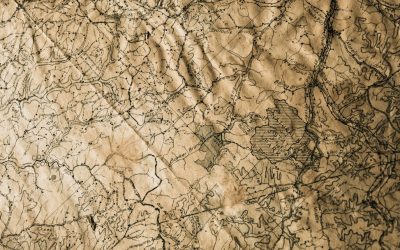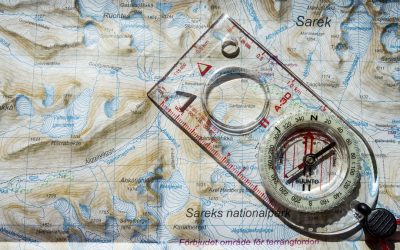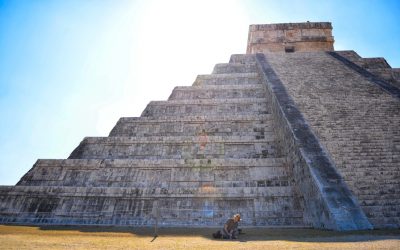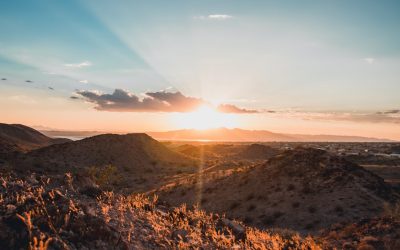Explore the World Through Geography, Natural Resources & Daily History
Clear, reliable and engaging guides that help you understand our planet — from UK geography education to global natural resources and On This Day history events.
Explore, discover, and learn about the wonders of our world! At Earth Site, we’re passionate about bringing geography, history, and science to life for curious minds of all ages. Whether you’re delving into historical events, uncovering the mysteries of the natural world, or seeking interactive resources, you’re in the right place.
Here, you can uncover the stories behind historical events, explore the natural wonders of our planet, and gain valuable insights into how the Earth’s systems shape our daily lives. From the towering peaks of mountain ranges to the far-reaching impacts of human innovation, we aim to make every topic both engaging and informative.
Start your journey of discovery with us today, and let’s make learning an adventure!
What We Cover
Earth Site brings together engaging and accessible educational content designed to help you understand the world, its history, and its natural systems.
🌍 Geography Education (UK & Worldwide)
We publish clear, easy-to-understand geography resources for students, teachers and curious learners. Our guides support geography education in the UK and cover physical geography, climate, ecosystems, population, and global development.
⛏️ Natural Resources & Environmental Geography
Explore detailed country profiles covering natural resources, mining, energy, geology and global environmental challenges. We show how nations manage minerals, water, land and ecosystems, and why these resources matter.
📅 On This Day in History
Every day has a story. Our On This Day history series features major events, anniversaries, traditions, and cultural milestones from around the world — with timelines, context, and fun facts.
TIMELINE
Climate Zones of Belize: Different climate regions Of Belize
Belize, a small country located in Central America, is known for its diverse geography and climate. It is bordered by Mexico to the north, Guatemala to the west and south, and the Caribbean Sea to the east. The country’s climate is influenced by its proximity to the equator, the Caribbean Sea, and the surrounding landmasses. Understanding the different climate zones in Belize is important for various reasons, including agriculture, tourism, and conservation efforts. Summary Belize has a diverse range of climate zones, including tropical rainforest, subtropical, tropical monsoon, humid subtropical, arid, semi-arid, highland, and coastal. The tropical rainforest climate in Belize is characterized by high temperatures and rainfall throughout the year, with a wet season from May to November. The subtropical climate in Belize has mild winters and hot summers, with moderate rainfall throughout the year. The tropical monsoon climate in Belize has a distinct wet and dry season, with heavy rainfall from June to November and a dry season from December to May. The impacts of climate change on Belize’s climate zones include rising sea levels, increased frequency and intensity of extreme weather events, and changes in precipitation patterns. Tropical Rainforest Climate in Belize One of the main climate zones in Belize is the tropical rainforest climate. This climate is characterized by high temperatures and abundant rainfall throughout the year. The average temperature in this zone ranges from 24°C to 27°C (75°F to 81°F), with little variation between seasons. The rainfall is evenly distributed throughout the year, with an average annual precipitation of 2,000 to 4,000 millimeters (79 to 157 inches). Regions in Belize that have a tropical...
Political Boundaries of Belize: Provinces, Districts, or Historical Boundaries.
Belize, a small country located in Central America, is known for its stunning natural beauty and rich cultural heritage. However, beneath its picturesque landscapes lies a complex web of political boundaries that have shaped the country’s history and continue to influence its governance. Understanding these political boundaries is crucial for comprehending Belize’s political and economic landscape. Summary Belize is a country with distinct political boundaries that have evolved over time. The country is divided into six provinces, each with its own unique characteristics and governance structure. Within each province, there are multiple districts that play a crucial role in local governance and decision-making. The historical boundaries of Belize have had a significant impact on the country’s modern-day politics and governance. As Belize continues to develop and grow, there are both challenges and opportunities for the future of its political boundaries. Belize’s Provinces: An Overview Belize is divided into six provinces, each with its own unique characteristics and historical background. The provinces are Belize District, Cayo District, Corozal District, Orange Walk District, Stann Creek District, and Toledo District. The Belize District is home to the country’s largest city, Belize City, and serves as the economic and political hub of the country. It has a rich colonial history and was once the capital of British Honduras. Today, it remains an important center for commerce and tourism. Cayo District, located in the western part of Belize, is known for its lush rainforests and Mayan ruins. It is a popular destination for eco-tourism and adventure activities such as hiking and cave exploration. The district also has a significant agricultural sector, with farming and...
Natural Resources of Belize: Where Natural Resources are located In Belize
Natural Resources of Belize: A Treasure of Tropical Wealth Belize is a small country with a rich tapestry of natural resources, from lush forests and fertile agricultural lands to marine resources and mineral deposits. Understanding the natural resources of Belize isn’t just about recognizing what the land provides, but also appreciating the role these resources play in Belize’s economy, culture, and future. This article is worth reading for anyone interested in sustainable development, tourism, and the environment, as it explores how the Ministry of Natural Resources works to protect and manage these assets for present and future generations. What Makes Belize’s Natural Resources So Unique? Belize is located in Central America and boasts a diverse climate and geography, including coastal regions, rainforests, and the famous Belize Barrier Reef. These features contribute to the country’s natural resources and support the biodiversity that makes Belize a global environmental hotspot. How Does the Ministry of Natural Resources Manage Belize Land? The Ministry of Natural Resources undertakes the immense responsibility of managing land and resources in Belize. Through land management initiatives and policies for sustainable development, the ministry works diligently to improve the quality of life for present and future generations of Belizeans. Protection and sustainable use of Belize land is crucial to preventing environmental degradation and promoting economic stability. What Are the Key Forest Resources in Belize? Forests in Belize, particularly in the Maya Mountains, are rich in biodiversity and provide valuable timber resources such as mahogany and logwood. The forest sector is a key contributor to the timber industry in Belize, and responsible forestry practices ensure the sustainable harvesting of...
Cultural or Historical Sites of Belize: Important Cultural Landmarks or Historical Sites In Belize
Introduction Belize, a small country located on the eastern coast of Central America, is known for its rich history and cultural heritage. From ancient Maya ruins to colonial architecture, Belize offers a unique glimpse into the past. In addition to its historical sites, Belize is also home to natural wonders such as the Belize Barrier Reef and the Cockscomb Basin Wildlife Sanctuary. Exploring these ancient ruins, colonial architecture, and natural wonders is not only a way to appreciate Belize’s past, but also an opportunity to connect with its vibrant present. The Ancient Maya Ruins of Belize: A Window into Pre-Columbian Civilization The Maya civilization, one of the most advanced pre-Columbian civilizations in the Americas, flourished in what is now Belize from around 2000 BC to 1500 AD. The Maya left behind a rich legacy of art, architecture, and knowledge that can still be seen today in the ancient ruins scattered throughout Belize. These ruins offer a window into the lives and beliefs of the Maya people. One of the most popular Maya ruins in Belize is Xunantunich. Located near the border with Guatemala, Xunantunich was once a major ceremonial center and political hub. The site features impressive structures such as El Castillo, a towering pyramid that offers panoramic views of the surrounding jungle. Another notable Maya ruin in Belize is Tikal, located just across the border in Guatemala. Tikal was one of the largest and most powerful Maya cities, with towering temples and palaces that still awe visitors today. The Colonial Architecture of Belize City: A Legacy of British Influence Belize has a rich colonial history, having been under...
Exploring Belgium’s Population Density
Belgium, a small country located in Western Europe, is known for its high population density. With a land area of just over 30,000 square kilometers and a population of approximately 11.5 million people, Belgium has one of the highest population densities in Europe. This means that there are a large number of people living in a relatively small area, resulting in crowded cities and towns. Understanding population density is crucial for policymakers, planners, and citizens alike. It helps us to better understand the challenges and opportunities that come with high population density, and to develop strategies to create sustainable and livable communities. By examining the factors that contribute to population density in Belgium, we can gain insights into the social, economic, and political dynamics of the country. Summary Belgium has a high population density, with over 11 million people living in a relatively small area. The population is concentrated in urban areas, with Brussels being the most densely populated city in the country. Factors affecting population density in Belgium include historical and cultural factors, economic opportunities, and government policies. Urbanization has led to increased population density, but rural areas still play an important role in the country’s population distribution. Compared to other European countries, Belgium has a relatively high population density but also a high quality of life. Understanding the Population Distribution in Belgium The population distribution in Belgium is not evenly spread across the country. There are significant differences between the three main regions: Flanders, Wallonia, and Brussels. Flanders, located in the northern part of Belgium, has the highest population density, with major cities such as Antwerp and...
Exploring Belgium’s Climate Zones: Regional Weather Differences
Belgium, a small country located in Western Europe, is known for its diverse climate zones. Despite its relatively small size, Belgium experiences a range of weather patterns due to its geographical location and proximity to the North Sea. Understanding these climate zones is not only important for travellers planning their trips, but also for farmers and conservationists who rely on the weather patterns to make informed decisions. In this article, we will explore the different climate zones in Belgium, their characteristics, and the best times to visit each region. Summary Belgium has four main climate zones: maritime, continental, Ardennes, and coastal. The maritime climate zone is characterized by mild temperatures and high levels of precipitation. The continental climate zone experiences hot summers and cold winters with low precipitation. The Ardennes climate zone has cooler temperatures and higher levels of precipitation than the continental zone. The coastal climate zone has mild temperatures and moderate precipitation levels. Regional differences in temperature and precipitation can have a significant impact on agriculture and wildlife in Belgium. Climate change is affecting Belgium’s weather patterns, with increased temperatures and more extreme weather events. When packing for different climate zones in Belgium, it’s important to bring layers and waterproof clothing. The best times to visit each region depend on the climate zone, with summer being the most popular time for tourists. The Maritime Climate Zone The Maritime Climate Zone in Belgium is characterized by mild winters and cool summers. This climate zone is influenced by the North Sea, which moderates the temperatures and brings moisture to the region. The weather patterns in this zone are often...
Exploring Belgium’s Varied Terrain: Mountains, Valleys, and Plains
Belgium, a small country located in Western Europe, is known for its rich history, delicious cuisine, and stunning architecture. However, what many people may not realize is that Belgium also boasts a diverse and beautiful landscape. From the mountainous region of the Ardennes to the rolling hills of the Condroz, Belgium offers a wide range of natural beauty waiting to be explored. In this article, we will take a closer look at the different regions and landscapes that make up Belgium’s diverse terrain. Summary Belgium’s landscape is diverse and offers a range of unique regions to explore. The Ardennes is Belgium’s mountainous region and is perfect for outdoor activities. The Meuse and Sambre valleys offer stunning scenery and historic sites to visit. The Flemish Ardennes is a hilly landscape with picturesque villages and cycling routes. The coastal plains of Belgium offer a unique landscape with sandy beaches and dunes. The Ardennes: Belgium’s Mountainous Region Located in the southern part of Belgium, the Ardennes is a picturesque region known for its dense forests, rolling hills, and charming villages. This mountainous area covers about one-third of the country and is a popular destination for outdoor enthusiasts. Hiking is one of the most popular activities in the Ardennes, with numerous trails winding through the lush forests and offering breathtaking views of the surrounding landscape. In the winter months, skiing and snowboarding are also popular activities in the region. The Ardennes is home to several notable landmarks and attractions. One of the most famous is the town of Durbuy, often referred to as “the smallest city in the world.” With its medieval architecture...
Belgium’s Political Boundaries: Provinces, Districts or History?
Belgium is a country located in Western Europe and is known for its complex political system. It is a federal parliamentary democracy, which means that power is divided between the federal government and the regional governments. Understanding Belgium’s political boundaries is crucial for both Belgians and non-Belgians, as it helps to navigate the country’s governance structure and comprehend the diverse regional identities within the nation. Summary Belgium is divided into three regions: Flanders, Wallonia, and Brussels-Capital. Provinces in Belgium have limited powers and are mainly responsible for administrative tasks. Districts in Belgium are important for local governance and are responsible for services such as education and healthcare. Belgium’s political boundaries have evolved over time due to historical events and political negotiations. Regional identity in Belgium is strongly tied to language and cultural differences. The Role of Provinces in Belgium’s Political System Provinces in Belgium are administrative divisions that play a significant role in the country’s political system. There are ten provinces in Belgium, each with its own governor and provincial council. The provinces have various responsibilities, including managing local infrastructure, education, culture, and public safety. They also act as intermediaries between the federal government and the municipalities within their jurisdiction. Provinces are an essential part of Belgium’s federal system, as they help to decentralize power and ensure that regional interests are represented. They provide a level of governance that is closer to the people, allowing for more localized decision-making. Provinces also serve as a link between the federal government and the municipalities, helping to coordinate policies and initiatives at different levels of government. Understanding Belgium’s Districts and their Importance...
Belgium’s Cultural and Historical Gems: Must-Visit Sites
Belgium, a small country located in Western Europe, is often overlooked by travelers in favor of its more famous neighbors such as France and Germany. However, this charming country has a rich history and culture that is worth exploring. From its medieval towns and Gothic cathedrals to its vibrant art scene and delicious cuisine, Belgium offers a diverse range of attractions that will captivate any visitor. In this article, we will take a journey through time and explore Belgium’s fascinating history, discover the iconic landmarks of its capital city Brussels, visit its magnificent cathedrals, uncover its artistic contributions, explore its charming towns and villages, commemorate its role in World War I, indulge in its culinary delights, delve into its contribution to the art world, soak up the sun and sea on its coast, and unearth its hidden treasures. Summary Belgium has a rich history that can be explored through its many landmarks and attractions. Brussels is home to iconic landmarks such as the Atomium and the Grand Place, which are must-see destinations. Belgium’s cathedrals, such as the Cathedral of St. Michael and St. Gudula, are magnificent examples of Gothic architecture. Belgium’s art and architecture scene is vibrant and diverse, with notable contributions to the Surrealist movement. Belgium’s countryside is dotted with charming towns and villages, offering a glimpse into traditional Belgian life. A Journey Through Time: Exploring Belgium’s Rich History Belgium’s history dates back to Roman times when it was part of the Roman province of Gallia Belgica. Over the centuries, it has been influenced by various European powers including the Spanish, French, and Dutch. One of the most...
Discover Belgium Natural Resources: Economy of Belgium
Discover Belgium Natural Resources: Economy of Belgium Belgium may be small in size, but it plays a significant role in the European and global economy. This article explores the natural resources of Belgium and how they influence the economy of Belgium, including its coal, natural gas, and water resources, among others. Whether you’re a student, researcher, or just curious about how Belgium’s natural resource base supports its industries, energy mix, and GDP, this is a must-read! Despite its relatively limited mineral wealth compared to some larger European countries, Belgium’s economy thrives on the smart utilisation of available resources, a highly developed transport and service sector, and a strategic position in Western Europe. Read on to understand the nuances of Belgium’s natural resources, its historical role, and future sustainability challenges. Article Outline What Are the Major Natural Resources in Belgium? How Have Belgium’s Coal Reserves Shaped Its Industrial Past? What Role Does Natural Gas Play in Belgium’s Energy Mix? Are Water Resources in Belgium Sufficient and Sustainable? How Important Are Zinc and Lead Deposits to Belgium? What Is the Status of Silica and Limestone Resources in Belgium? What Contribution Do Belgium’s Forests and Timber Make to the Economy? How Is Renewable Energy Evolving in Belgium? How Do Natural Resources Affect the GDP and Major Industries in Belgium? What Are the Environmental Concerns Related to Belgium’s Resource Use? 1. What Are the Major Natural Resources in Belgium? Though Belgium is located in Western Europe with a modest land area, it possesses a variety of natural resources that have historically supported its industrial and economic development. Key natural resources include coal,...
Population Density of Belarus
Population density refers to the number of people living in a specific area, usually measured as the number of individuals per square kilometer. It is an important indicator of the distribution of population within a country and provides insights into the social, economic, and environmental aspects of a region. Studying population density in Belarus is crucial for understanding the country’s demographic patterns, urbanization trends, and their impact on economic development and environmental sustainability. Belarus, officially known as the Republic of Belarus, is a landlocked country located in Eastern Europe. It shares borders with Russia to the east, Ukraine to the south, Poland to the west, and Lithuania and Latvia to the northwest. With a total land area of approximately 207,600 square kilometers, Belarus is home to a diverse population that has experienced significant changes in population density over the years. Summary Belarus has a population density of 46 people per square kilometre. Population density in Belarus has fluctuated throughout history due to factors such as war and migration. The highest population densities in Belarus are found in the central and eastern regions. Factors influencing population density in Belarus include economic opportunities and access to resources. Urbanization has led to increased population density in Belarus, while rural-urban migration has had a mixed impact. Historical Trends in Belarusian Population Density In the early 20th century, Belarus had a relatively low population density compared to other European countries. This was primarily due to its rural nature and agricultural economy. The population density increased during Soviet rule as industrialization efforts led to urbanization and migration from rural areas to cities. The population density...
Terrain and Topography of Belarus: mountains, valleys, and plains.
Belarus, located in Eastern Europe, is a landlocked country known for its rich history, vibrant culture, and diverse natural landscapes. Understanding the terrain and topography of Belarus is crucial in comprehending the country’s unique characteristics and its impact on various aspects of life, including climate, agriculture, and development. From the flatlands of the Great European Plain to the hilly regions of the Grodno Upland and the marshy Polesian Lowland, Belarus offers a wide range of landscapes that contribute to its beauty and diversity. Summary Belarus is a country with diverse terrain and topography. The Great European Plain dominates the landscape of Belarus. The Belarusian Ridge is the highest point in the country. The Polesian Lowland is a marshy region in southern Belarus. The Belarusian Lake District is a region of glacial lakes in the north. The Flatlands of Belarus: The Great European Plain The Great European Plain is a vast lowland that stretches across several countries in Eastern Europe, including Belarus. This flatland covers a significant portion of Belarus’ territory and has a profound influence on the country’s climate and agriculture. The plain is characterized by fertile soil, making it ideal for agricultural activities such as farming and livestock rearing. The flatlands are home to several cities and landmarks that showcase Belarus’ rich history and culture. Minsk, the capital city, is situated in the central part of the country and serves as a hub for economic, political, and cultural activities. Other notable cities in the flatlands include Brest, Gomel, and Mogilev. These cities are known for their architectural beauty, historical sites, and vibrant cultural scenes. The Belarusian Ridge: The...











